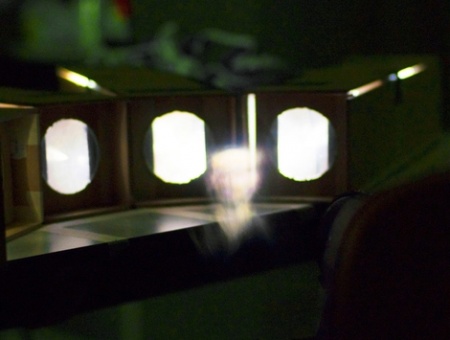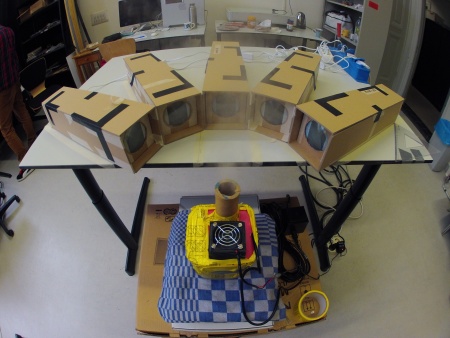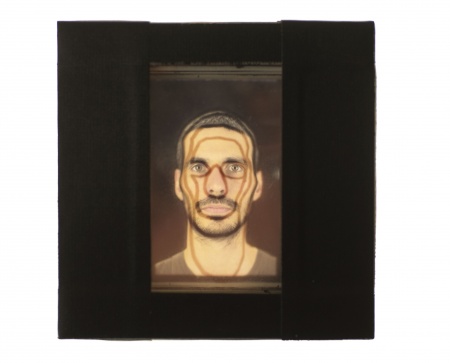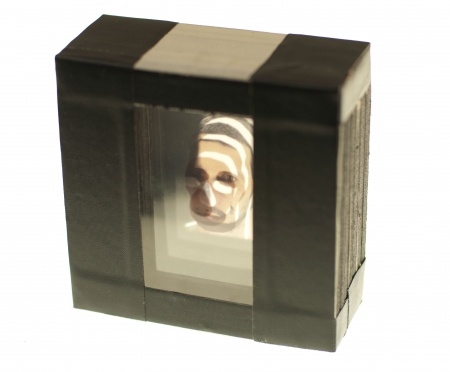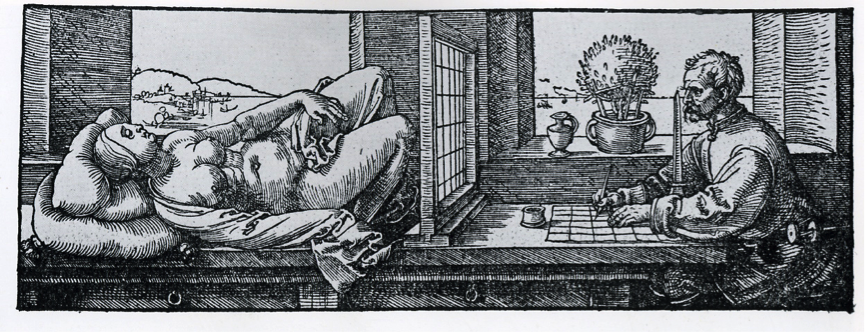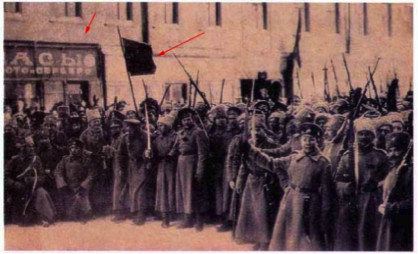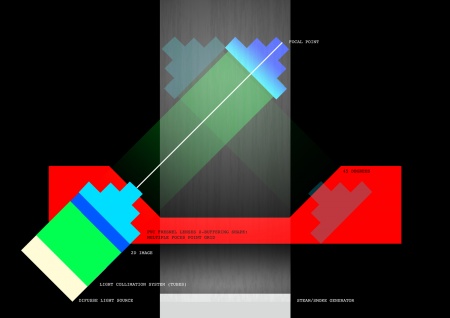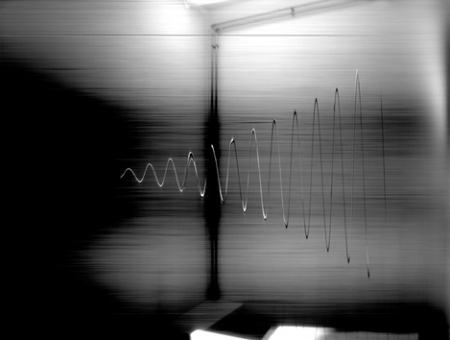User:Tomas Navarro
Thesis last update: 25/04/2012 TRUE HOLOGRAM; SUBSTANCE
tomas@crampton.es
True Hologram is a 3d display that forms a photorealistic volume in a high-saturated air medium (mist). True Hologram is a lens-based optical illusion that avoids any solid surface of projection, working exclusively with self-invented methodologies.
Test footage, 24/04/2012 PZI Rotterdam
Test footage, 02/04/2012 PZI Rotterdam
April 02 2012: I've already tested a first device prototype that projects a volumetric self-portrait (still image) in photographic form towards a column of atomized water (cold mist), which can be half-surrounded (120 degrees) and touched.
Set up: Multi-angle projection (up to 5 beamers). Ultrasonic humidifier.
Source:multi-layered portrait, prototype.
Source: multilayered portarit, up to 5 angles.
Beamer; parts from left to right: magnifying glass, PVC fresnel lens, (source*), 2nd PVC fresnel lens, white difussion photofilter, 21 led bulb.
True Hologram is a lens-based and self-invented device that projects a photorealistic volume in a column of cold mist (I'm actually prototyping the device after successful tests). The device gathers DIY methodologies, smart/affordable approaches to 3d imaginery and re-adapted technology in order to achieve a floating volume formed just by casted light and photographic transparencies.
True Hologram is the working title for my final project at the master course Lens-based Digital Media, department of the programme Media Design, Piet Zwart Institute, Rotterdam. The project is the logical response to my concern of what the screenings devices will look like in the incoming years and how we going to deal with the new, 3d-based, and interactive visual technology. Far away from scientist or high-tech coordinates I managed to set up a DIY approach to photorealistic light sculpturing. True hologram is smartly based on lenses, light transmission and simple achievements regarding 3d film processing and stereopsis. Holography is the process by which we could record the volume of any subject and then reproduce a 3D photographic representation of it. For many years the medium faced the unavoidable flat medium of screening; the volumetric images were formally a “multilayered photography”, a flat screen able to show different angles of an image and inevitably just an illusion of parallax.
Widely defined by futuristic movies the holographic medium is still an unknown place for communication systems. Even if the last high-tech outcomes are able to fully depict a photorealistic 3d volume they cannot be touched; conceptually implies that they are caught in a certain ether or non-natural substance. Consequently I'm proposing a happy-tech device that, through basic re-adapted machinery, brings close to us the 3d displays (which nowadays are culturally still futuristic), using the methodologies of art and design; a hologram that can be touched.
Research working title:
z-buffering [1], an informal inventory of avant-garde imaginery of 20 and 21 century.
intro
Z-buffer is an extra layer of a photographic image that contains a precise map of the three dimensional geometry of the scene. Is exactly what human stereopsis/binocular vision does. This document is driven by the research process of obtaining a true hologram, which we can widely defined as a 3D representation in photographic form.
expanded index
1. Photographic aesthetics
2. Holograms
3. Z-buffering, metadata and tracking.
4. Concept design of lens-based hologram
5. 360; Ubiquity
6. Test 1
'7. Communication and data
8. Videogames emulating cinema // cinema emulating videogames and back again. machinima.
9. New narratives: googling, fakes, viral, cross-media,''
LBDM reserach project
LBDM artwork research
The process that guides the thesis is my camera work investigation, focused this year in the possibility of create a 360 hologram to be projected in a smoke saturated medium.
Through the highlights of the research I’ll link the index above mentioned and therefore establish a sequential process that mix technological outcomes with aesthetics and personal motivation.
The hologram experiment is therefore a touchstone that gathers these concepts of modern videography:
1. 360 degrees view.
2. Z-buffering.
3. Metadata (Multi-layered data).
4. New screening devices.
5. 3d features (stereoscopy, stereograms).
6. Optical challenges and new devices.
7. Freeze frame, bullet time, frozen time.
8. Augmented reality.
9. Sampling.
PHOTOGRAPHIC AESTHETICS
Hologram: 3D representation in photographic form.
The adjective photographic implies a realistic image, therefore a faithful record of the zoe , which is all the entities of our empiric experience (zoe, ζωή, life). Thus I’ll briefly explore why photography has been accepted as the objective tool for knowledge and communication and consequently established as orthodoxy on visual culture. Photography is strictly referred to the specific technology, able to faithfully mirror the empiric reality. However different reality projects were executed before, with the same function of mirroring and memorial permanence.
Nevertheless those reality projects never reached the scientific effectiveness of the photography, which its main differences are the objectivity, permanence and reproducibility of the images through the mechanic and chemical process. However both reality projects and photography share the same function: precise communication. They aimed to be empiric cognitive experiences but only photography was suitable for the scientific criteria of the modern era.
As medium (communication tool), the photography traces a specific axis in which its operates:
Zoe ---- Perception ---- Intention ---- Memory
We accept the photographic medium as a true testimony of our environment and history. Through the witness we agree on one immutable but accumulative culture, which is constantly re-shaping the zoe, perception of reality and the intention by which it’s observed. Therefore the above-depicted axis can be retraced as a circle (reality defines photo and photo re-defines reality). Thus, the core of the photographic medium is not the optical phenomena itself but the derived orthodoxy (and consequent heterodoxy): a social contract by which society agrees, by common sense, with specific semiotics related to the contextual visual culture. Please notice that I’m using the word orthodoxy, orthos (correct) doxa (opinion), which contrasts directly with a reasoned knowledge (ex: epistemology), therefore it is based in shared beliefs.
Although the photography is inevitably an applied science, his function as communication tool could or not fit in a rational scheme due to the subjectivity and permeability of the audience. History teaches us that many uses of it transcend in fact the apparent objectivity. The above-mentioned orthodoxy works, is credible, due to photography posses the same features of a mirror, adding the permanence and reproducibility. Instinctively we can trust on a photography as impermeable, perfect, even supernatural, mimesis. As premise: all the photographic medium serves to objectively depict the human activity and, culturally, we trust on it.
Therefore the function of the photography as medium is to mirror our concerns, shaping our culture within its coordinates of cognitive tool, which is also able to trespass our physiologic limitations and help us to record what is vanishingly small or immeasurably far away, thus magnifying the range of what is possible to measure (great concern of the scientific method). The content of photographic medium, independently of its purposes, is the reflection of our ideology in a specific social context and that defines the orthodoxy. On the other hand the motivation and intention by which photography is operated will define the level of compromise with the objectivity.
Thus, we can define two basic levels of compromise in photographic communication: the “realistic”, quotidian visual operations (objectivity), and the “meta-realistic”, which is the possibility of intervene the objectivity, for example, for artistic purposes.
Note: Susan Sontag regarding 11s.
Nevertheless the “meta-realistic” outcome needs to legitimize itself in order to be part of the same channel of communication. For example, a fake or visionary image needs to be legitimized as realistically possible; if it leaves the orthodoxy’s common sense it automatically becomes non legible and meaningless. In that sense we can deduce an immutable state of outcomes as we need to be anchored in a specific and contextualized space of ideas that could changes form but not content (culture). Thus, the evolution of ideas is basically a feedback that is not remarkably evolving but getting bigger and bigger, by incorporating the legitimized “meta-realistic” to the essentially immutable orthodoxy.
HOLOGRAMS
Widely defined by futuristic movies the true holographic medium is still a sacred place for imaginary communication systems. The true holographic medium, the “realistic” and legitimized hologram, is the one which projects a 3d object floating in the space, can be surrounded, can be touched and not is based on “after images” brain perception. Even if the last outcomes fully depicts a photorealistic 3d projections they cannot be touched; conceptually implies that they are caught in a certain ether or non-natural substance, therefore their presence cannot take place plenty in our dimensional coordinates.
In a sensitive level the best performance in holography is the parabolic mirror ghost, in which all the focal points converges from a form’s reflection, therefore the 3d projection needs the presence of the physical subject. The presence of the object is precise enough to trick the mind and believe in the veracity of the 3d projection.
The physics of the holographic outcomes will help us in establish a quick catalogue of achievements. Holography is the process by which we could record the volume of any subject and then reproduce a 3D photographic representation of it. For many years the medium faced the unavoidable flat medium of screening; the volumetric images were formally a “multilayered photography”, a flat screen able to show different angles of an image.
Conceptually and not depending of the source and projection device (laser, parallax barrier, lenticular vision, stereograms) the flat medium is still today the holographic 3D territory; the hologram itself is inevitably an illusion of parallax. Apparently we can establish a common ground of all these disciplines: the source is inherently linked to the binocular vision, parallax is the key for a complete 3d experience as replica of our vision system . Curiously the stereoscopy as discipline is older than photography.
Stereopsis
Meditation Space, animated autostereogram.
Rotterdam 2012.
Meditation Space is an animated autostereogram. Hidden behind the "magic carpet", through zen-like practice of logical suspension, a three dimensional image can be find. SIRDS images (autostereogram) are based on after-images, binocular disparity and mathematical algoritms in order to allow the stereopsis features of vision to see an underlayered depth mask (3d model) hidden in a computer generated dot pattern. Meditation Space propose an 3d cinematic experience that needs the active participation of the audience; autostereograms implies that the brain must overcome the automatic coordination between focusing and vergence. Therefore the artwork requires a certain state of mind, practice and discipline.
Link to Holography history report [2] Link to easy stereoscopic outcomes article [3]
Z-BUFFER, METADATA AND TRACKING
Looking for the mental coordinates of aesthetics in the digital era I found intrinsic the concern of incorporating complex parameters related to the geometry of the space and time to our ordinary footage, adding layers of data (metadata) to the usual 4 dimension image aiming for an immersive experience. We can find complex digital imaging in any kind of media, which becomes augmented media as we can perceive further features on the reality projection or even real-time interaction with the content. All these outstanding outputs are basically an exhaustive “scan” of a specific experience in which we can modify every parameter of the 4d representation, actively or passively.
The parallax-based analysis of the space made possible for example hiperealistic CGI animation in perfect symbiosis with real footage or body detection interfaces. Conceptually resumed here as z-buffer; the gray scale z-buffer has been used in CGI rendering, postproduction of still images (2.5 photo reconstruction), digital depth of field mapping, infrared stereoscopic cameras and interfaces and the mathematically generated stereograms, in which the 3d parallax of both eyes is codified by correlative points generated by an algorithm in a flat random pattern image. Almost artistically the content of the stereogram is the z-buffer itself, we have access to the metadata only when our vision and brain is trained for the binocular trickery. In that sense the stereograms propose a meditative zen-like exercise, which is, the less, remarkable
All these features that actually are becoming really close to us will define the future’s capability of, further than depict motion and colors trough light, recognize and interact with shapes, places, people and go on. In a few years all these technologies will be amplified and face recognition, speech translation, movement tracking, real-time synchronization with other media, interaction with the environment, virtual reality, online communities, etc... will be more than real: a new and unexplored territory for the imaginery users. If we synthesizes this imaginery as individual medium of art we can easily understand some outcomes as peaks of an outstanding and new visual culture. Personally I feel attracted by visual works that operates from inside a specific medium or circumstances, understanding therefore the inherent features of it as communication tool and being then the author a demiurge (to build a reality) of a specific event that happens inside that piece of time and space. In the video artwork “Centers”, Vito Acconci is trying to point the center of the screen, he’s almost touching him broadcasted persona in an artistic feedback performance. The human gesture is therefore propagated to the specific circumstances of the medium (video broadcasting) in a simple but joyfully way, open to many interpretations and experiences. The tools of a certain medium are understood and subjugated by the artist, which uses his potential to propose a credible statement of archetypical concern. Is now my work to understand in which way the outstanding outcomes of modern imaginery will transcend the accepted ideology in order to define a revolutionary future’s visual culture.
CONCEPT DESIGN OF A LENS-BASED HOLOGRAM
"[T]he invention of an hypothesis in order to explain a certain natural process, then the arranging of conditions under which that process may intentionally be brought about in accordance with the hypothesis, and finally, the justification or refutation of the hypothesis, depending on the outcome of the experiment".
From Picatrix, regarding the scientific experiment method.
The hologram I’m aiming to build is therefore a true volume that floats in air and can be touched, an optical illusion that allows the audience to perceive a 3d representation in photographic form avoiding any surface of projection.
I should clarify that my research is not technological and will be executed as an artistic and intuitive investigation of new screening devices. I want to be able to set up original experiences in moving images, working with specific and self-invented methodologies. The goal is to push the audience and myself to an extraordinary and unexpectable experience in imaging due to the singularity of its inherent features. I want the audience watching an extraordinary object of which its main charestiricis its basis on basic natural physics.
My first idea was to work with a grid of concentrated-light pixels attached to a source of light in which each pixel, further than depict colors and luminance also describes the depth relative of those pixels onto space (z-buffering). Each light pixel is formally a tube, that actually works as simple collimation device, that also has a plano-convex lens in a specific distance from the source of light. In that way, the more is complex the grid, the more It’ll be able to concentrate points of light following an specific order in the three Cartesian axis of the space (x,y,z).
Through the sketches I’ve been working on the formal qualities of the device, being able to analyze all the elements involved before the materialization of it. The showed sketches, chronologically ordered, can express how I’ve been focusing my ideas from the concept design until the first real testers.
TEST 1
Still frame DIY projector, 2 units. Media:TESTER 1.pdf
Once finished my research on affordable materials I decided to start building a prototype of the self-made beamers I want to use. As you can appreciate in the previous images I need multiples sources of images so consequently I developed a easy-to-do, replicate and transform cardboard functional model. For my first test I didn’t apply the depth map on images although the device is prepare to allow on it a multilayered film, which will be the core of the second test. Curiously, built up my own projector shape some ideas regarding z-buffering in an unexpected and extremely positive way. Until the beginning of the experiments I always thought on depict the depth mask of my images by creating a grid of multiples Fresnel lenses displaced in relative distances along the z-axis. However, analyzing the qualities of my projector, is obvious that the depth should be depicted directly in a multilayered frame, that makes the object and the process much more affordable. The bulb cast a beam of light onto a white diffusion frame, the diffused light incises on a Fresnel lens, which condense the light, through the frame that contains the image. The beam is finally projected due to a combination of a second Fresnel lens and a magnifying glass. I observed that a third Fresnel lens between the two optical elements is helpful in order to remove vignette effect and chromatic aberration (produced by low-quality lenses).
The basic materials are: a LED bulb, a white diffusion photofilter (paper), a magnifying glass and two pocketsize acrylic Fresnel lens. The body and frames are made by card board and foam board, the size of the device is conditioned by the lenses’ size. No part has been glued; all the frames can very easily moved and fixed again. Since my goal was to set up the basic elements on projecting flat images as quick as possible I didn’t built on it the collimation system. However the inherent form of the device and the qualities of the Fresnel lenses made the light beams in a pretty straight way. For further experiences I’ll add that, which is basically a grid of tiny tubes, in the space between the bulb and the white diffusion sheet. That space have been respected for that purpose and, after work with the features of LED bulb, I realized that a main white diffusion filter should be added before the light goes on the collimation system otherwise I’ll get some gaps on light intensity and what I need is a constant casted light on all over the surface.
NOTES(work in progress)
- Rosalind Krauss: Video: The aesthetics of narcissism. - Vito Acconci: Centers. - Anna Maria Guasch: El arte ultimo del S.XXI - Lorraine Daston and Peter Galison: Objectivity. - Joh Tagg: The burden of representation.
Pendulum, previous work. Cronophotography. Large digital format, rolling shutter photography, modified scanner. The revolutions of a pendulum from beggining until it stops are recorded in one single picture, made line by line, progresively accumulating time. "Pendulum" depicts the harmony of the movement, acceleration, intensity, simmetry and aims to highlights the aesthetics of physics.

